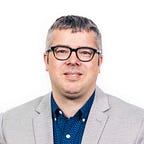Building Journalism With Community Starts With Building Trust
In early 2015 I wrote a post about why journalists should focus on building the future of news with communities, not just for them. I’m following up on that post with a series of profiles of people trying to embody this community-first approach.
Profile One: Jeremy Hay and EPA Now
Jeremy Hay is a Knight Journalism Fellow at Stanford University who has been covering local news from San Francisco’s Tenderloin district to Sonoma County for more than two decades. Before getting started in journalism Hay worked as a tenant organizer, union staff member and house cleaner in New York City.
Through his fellowship Hay is exploring how journalists can build on “the native talents in low-income communities to create their own source of media coverage” But when I sat down with Hay in San Mateo, California, last month it was clear that he didn’t want to just build on those talents, he wanted to build with the community. His first project is designing a local news service with residents in East Palo Alto, but Hay hopes he can take what he learns there and extrapolate it out to help other communities develop their own media infrastructure.
It is still early but Hay has already learned some valuable lessons about building with community, not for it.
1) Building With Demands Openness
Hay is approaching his work in East Palo Alto with open questions and an eye on existing community assets. Too often, he says, people (journalists included) go into communities with a set of assumptions and a focus on deficits. Instead, Hay began his work by listening and acknowledges that the project he’s now developing wasn’t his idea. “The idea of EPANow was hatched in a conversation with some community activists interested in creating their own news service, rather than counting on surrounding media organizations to improve coverage,” Hay writes in a post on Stanford’s website. Residents asked him if he would help them and he agreed. “While I am not superfluous to the process, and what I bring to it is important,” he writes, “I am of necessity secondary.”
2) Building With Means Not Importing Models
Coming out of a long career working in local news Hay had an idea about what a local news organization should look like and do, but that vision didn’t always match what the community needed or wanted from local news. “My approach in EPA started off leaning toward fitting the news organization I envisioned over the community,” he writes. “It is easy to see what a disaster it would have been had I persisted in that direction.” Hay is convinced that if you are going to build with community than there will never be one simple, seamless, replicable model. “To the degree that we are succeeding, it is because community members are choosing and adapting elements they want from the original vision, and freely designing others to suit EPA’s style, social processes, organizational and news priorities, needs and desires.”
3) Building With Is Intimate, Personal and Complex
Designing a new journalism organization (or even just a new investigation, reporting project or beat) with a community is uniquely personal because of the important role news and media play in people’s lives. Hay writes: “Communities own and are their news — even if they lack news coverage — and feel differently about news organizations than many other institutions. News is the skin, flesh, bones and blood of a community. It reflects a place, influences it, tells, in public, an ongoing story about it.” Hay found that there was a big gulf between the short term and immediate work of outreach to community leaders and the longer work of building trust. Many journalists face unique challenges in building with communities in part because many communities feel alienated from the news or misrepresented in the media.
4) Building With Communities Means Knowing Your Place
Knowing your place obviously has two complementary meanings, and in this case both are important. For Hay, he was new to East Palo Alto and had (still has, he would admit) much to learn about the area. Developing that local knowledge is critical to building journalism that leverages community assets and responds to community needs. However, knowing your place also means having enough self-awareness, humbleness and empathy to understand your role as a partner in the work of designing and building together with the community. He writes:
I’m an outsider trying to work inside a community to launch its own local news organization, the success of which will depend largely on it being organic to the community. I tell people the news service will be here in East Palo Alto. At other times, I say it will be there. I stand in a class of people to whom we are teaching journalism skills, and I veer between, “This will be our news site,” and, “This will be your news site.”
When we think about community engagement we often talk about feeling aligned with and connected to our community. But community building is messy, challenging and difficult work.
For Hay, the tension this sense of displacement causes is a good thing. It is a sign that he’s constantly checking his assumptions and trying to give up control. Too often, Hay notes, “Well-meaning outsiders have a habit of dropping in for a few years and, with little or no perspective, applying their own logic, beliefs and priorities to problems they independently identify, and then withdrawing with little of value left behind.”
This is often the key difference between building for the community and building with the community. Before we can build new modes of journalism with our communities we have to tackle the hard work of building trust. If we can’t open ourselves up to the diverse lived experiences of our communities, we’ll never be able to build something that truly represents and serves them.
Originally published at localnewslab.org on March 11, 2015.
